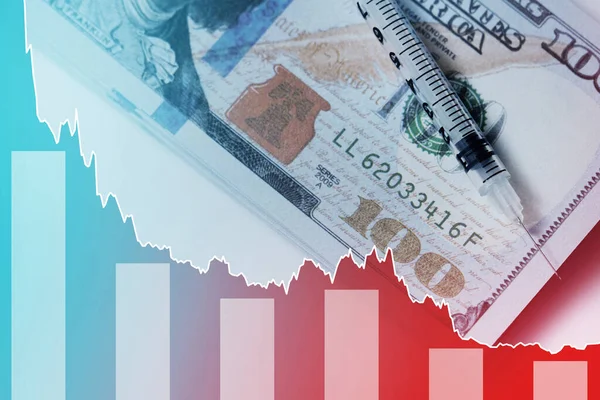The foreign exchange market, or Forex, is a dynamic and potentially lucrative trading environment. However, it also comes with significant risks due to its inherent volatility. Traders must deploy effective strategies to safeguard their investments and minimize potential losses. In this article, we delve into various aspects of Forex trading, offering insights and tips to help traders avoid common pitfalls.
Understanding Forex Market Volatility
Forex market volatility refers to the rapid and often unpredictable changes in currency prices. This volatility can be attributed to various factors, such as geopolitical events, economic data releases, and market sentiment shifts.
- Identifying Volatility: Understanding which currencies are most volatile can help traders prepare and adjust their strategies accordingly. Currency pairs like GBP/JPY or EUR/USD are known for their high volatility.
- Adapting to Change: Traders should be agile, adapting their strategies to match the market’s movement. This might involve changing time frames or using different technical indicators.
- Leveraging Tools: Utilizing volatility indicators, such as the Average True Range (ATR), can provide insights into potential price fluctuations.
- Market News: Staying informed about global news can help predict sudden currency movements, allowing traders to react promptly.
- Risk Tolerance: Assess your risk tolerance levels to decide which currency pairs suit your trading style.
- Historical Analysis: Reviewing historical volatility trends can offer clues about future market behaviors.
Importance of a Solid Trading Plan
A well-structured trading plan is essential for any Forex trader. It serves as a roadmap, guiding them through market complexities and helping to maintain discipline.
- Clear Objectives: Set specific, measurable goals for what you intend to achieve from Forex trading, whether it’s income generation or wealth preservation.
- Defined Strategies: Outline your trading strategy, including entry and exit points, and the economic indicators you will rely on.
- Risk Assessment: Determine how much capital you are willing to risk on each trade and what your maximum loss threshold is.
- Review and Adjust: Regularly review your trading plan’s effectiveness and make necessary adjustments to improve performance.
- Consistency: A consistent approach can help in managing emotions and avoiding impulsive decisions.
- Adaptability: Be willing to modify your plan in response to changing market conditions or personal financial circumstances.
Risk Management: Setting Stop-Loss Orders
Risk management is a cornerstone of successful Forex trading. Stop-loss orders are an effective tool for limiting potential losses.
- Stop-Loss Basics: A stop-loss order automatically closes a trade at a predetermined price, preventing further losses.
- Strategic Placement: Place stop-loss orders at strategic levels, such as just below support levels or above resistance levels.
- Dynamic Adjustment: Adjust stop-loss orders as the trade progresses to lock in profits while minimizing risks.
- Avoid Over-leveraging: Over-leveraging can lead to significant losses; hence, use leverage wisely.
- Risk-to-Reward Ratio: Maintain a favorable risk-to-reward ratio to ensure potential profits outweigh possible losses.
- Cost of Inaction: Ignoring stop-loss orders can lead to substantial financial setbacks.
Diversification: Spreading Your Investments
Diversification involves spreading investments across different financial instruments to mitigate risks.
- Variety in Currency Pairs: Trade a mix of major, minor, and exotic currency pairs to spread risk.
- Asset Classes: Consider investing in other asset classes such as stocks, commodities, or bonds alongside Forex.
- Geographical Spread: Diversify geographically by trading currencies from different regions.
- Reduced Correlation: Choose assets that don’t move in tandem to reduce potential losses.
- Long and Short Positions: Balance long and short positions to hedge against market downturns.
- Regular Portfolio Review: Continuously assess your portfolio’s performance and make adjustments as needed.
Staying Updated with Economic Indicators

Economic indicators are critical in anticipating currency movements and making informed trading decisions.
- Key Indicators: Pay attention to GDP, inflation rates, employment data, and central bank policies, as these impact currency values.
- Economic Calendars: Utilize economic calendars to track upcoming data releases and their potential market impact.
- Market Sentiment: Gauge market sentiment to predict reactions to economic announcements.
- News Sources: Follow reliable financial news outlets for timely updates on global economic developments.
- Impact Assessment: Evaluate how different indicators affect various currencies and adjust trades accordingly.
- Continuous Learning: Stay informed about changes in economic theory and policy to enhance trading strategies.
Comparison of Economic Indicators
| Indicator Type | Importance | Effect on Forex Market |
|---|---|---|
| GDP | High | Influences currency strength and economic growth perceptions |
| Inflation | Medium | Affects purchasing power and interest rate decisions |
| Employment | High | Reflects economic health; impacts consumer spending and confidence |
Avoiding Emotional Trading Decisions
Emotional trading can lead to poor decision-making and substantial losses. Maintaining emotional discipline is vital in Forex trading.
- Emotional Awareness: Recognize your emotional triggers and how they affect your trading behavior.
- Stress Management: Implement stress-reduction techniques such as meditation or regular exercise to maintain a clear mind.
- Discipline: Adhere to your trading plan and avoid deviating based on emotions like fear or greed.
- Patience: Cultivate patience to wait for the right trading opportunities instead of rushing trades.
- Mindfulness: Practice mindfulness to stay present and focused during trading sessions.
- Support System: Engage with a community of traders for support and sharing experiences.
FAQ
Q1: What is the most effective risk management strategy in Forex?
A1: Setting stop-loss orders is among the most effective risk management strategies, as it limits potential losses and protects trades from significant market swings.
Q2: How can I stay updated with economic indicators?
A2: Use economic calendars and follow reliable financial news sources to monitor upcoming data releases and analyze their potential impact on the Forex market.
Q3: Why is a trading plan important in Forex trading?
A3: A trading plan provides a structured approach to trading, helping to maintain discipline, set clear objectives, and make informed decisions based on predefined criteria.
By understanding these strategies and principles, traders can enhance their Forex trading experience, reduce risks, and work towards achieving consistent profitability.





This article really breaks down the complexities of Forex trading. I’ve been trading for a while but still found the section on volatility indicators like ATR quite enlightening. Keeping an eye on global news for market shifts is something I’ll start doing more diligently. Thanks for the tips!